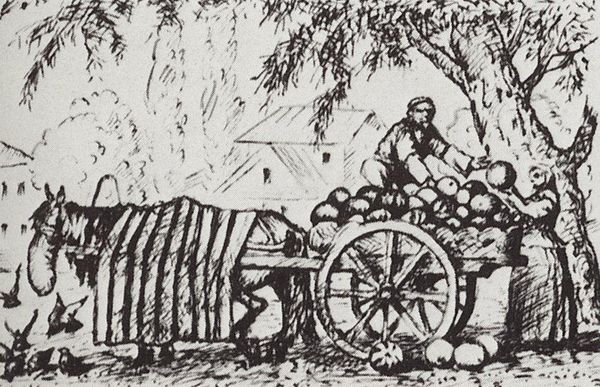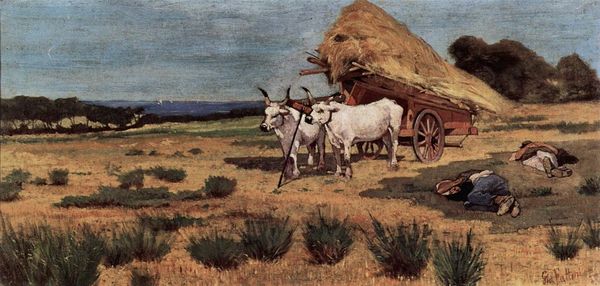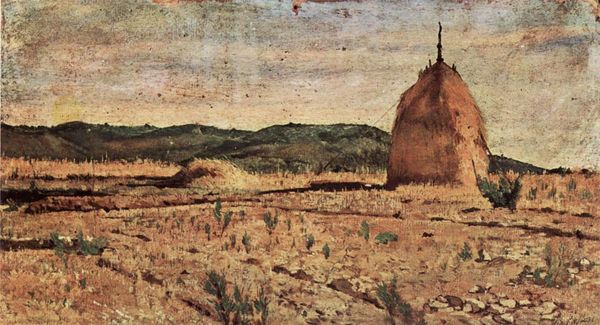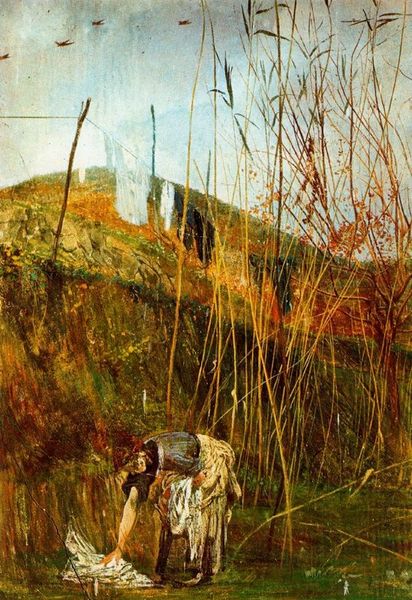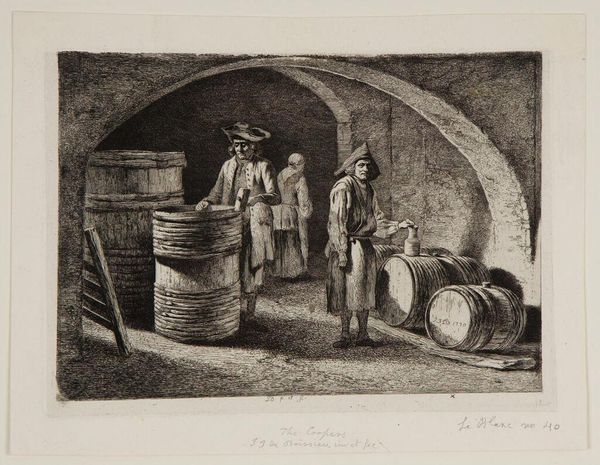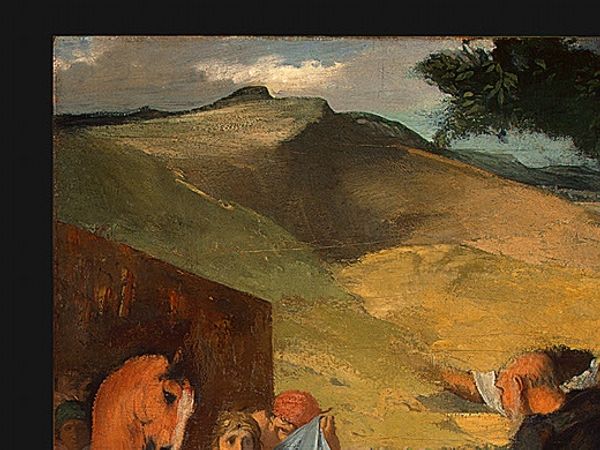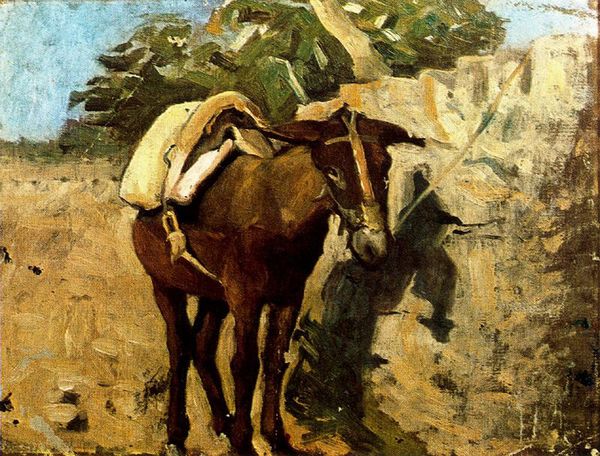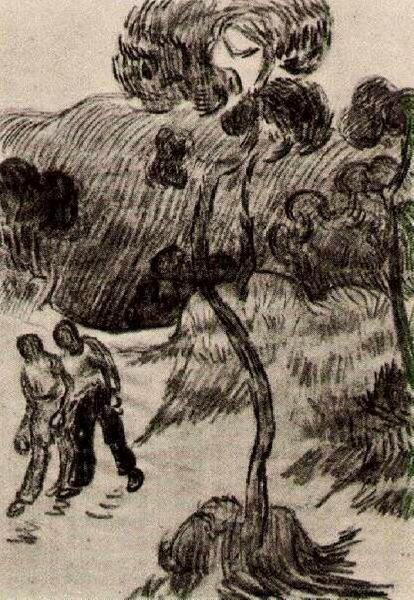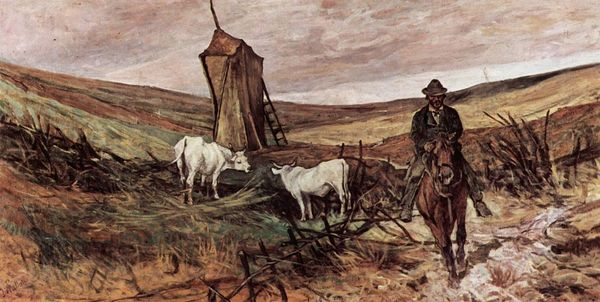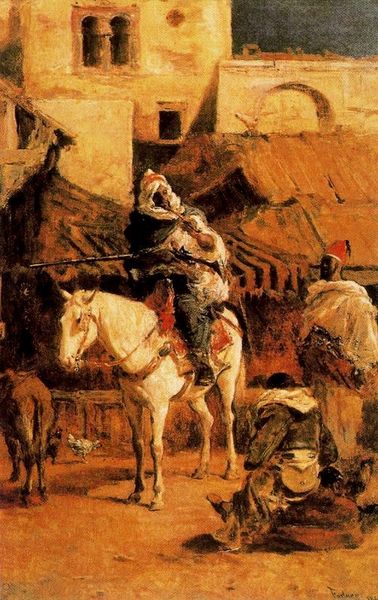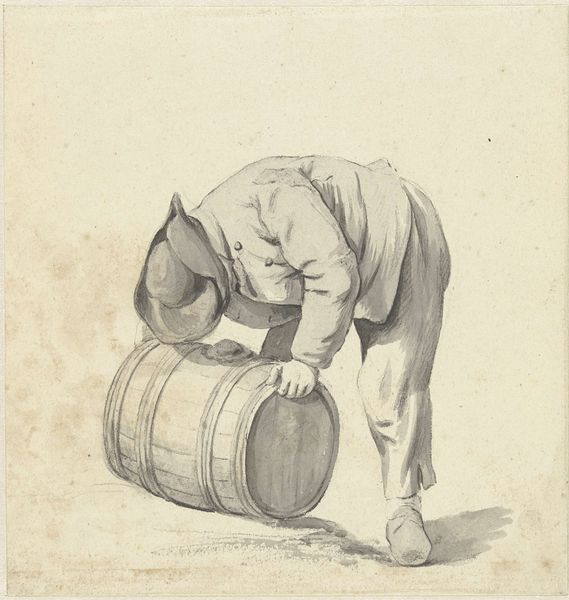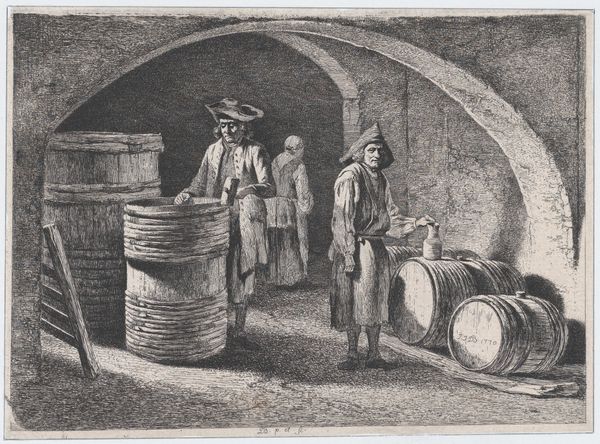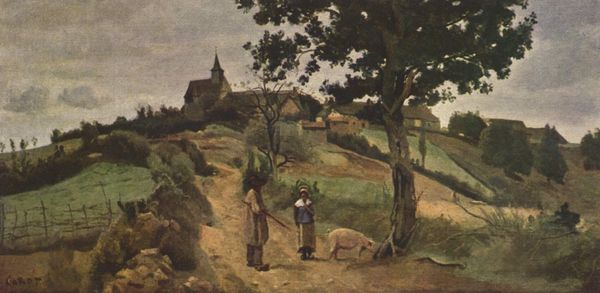
Dimensions: 13 x 28.5 cm
Copyright: Public domain
Editor: We're looking at Giovanni Fattori's "The Red Barrels," painted in 1870. It's an oil painting depicting a rural scene with large red barrels on a cart. It feels like a very straightforward depiction of everyday life, almost documentarian. How do you interpret this work? Curator: It seems straightforward, yes, but it’s also carefully constructed to communicate about labor and land. Consider the political climate of 1870 Italy—the Risorgimento was recent. Fattori, along with other Macchiaioli artists, were interested in capturing authentic Italian life. Do you notice how the peasant woman is positioned in relation to the barrels and haystacks? Editor: She's near the haystacks, almost blending in with them. The barrels are much more prominent. Curator: Exactly. The barrels, symbols of commerce and perhaps even of war efforts given the period, dominate the scene. Meanwhile, the figure performing agricultural labor is smaller, almost subsumed by the landscape. Fattori’s technique also contributes. The impasto application—thick paint—makes the land itself a weighty presence. What statement do you think Fattori is making about the relationship between labor, land, and burgeoning capitalist structures? Editor: So it's not just a pleasant countryside scene. You're saying Fattori might be commenting on the social hierarchy and the value placed on different types of work during this period of change in Italy? Curator: Precisely. The painting invites us to reflect on the invisible labor that props up dominant economic systems. Think about who benefits from the contents of those barrels versus who toils in the fields. Editor: I never would have seen that without your perspective. I’ll definitely look closer at the relationship between the figures and objects in paintings going forward. Curator: And think about whose stories art has historically centered, and whose it has left out.
Comments
No comments
Be the first to comment and join the conversation on the ultimate creative platform.
